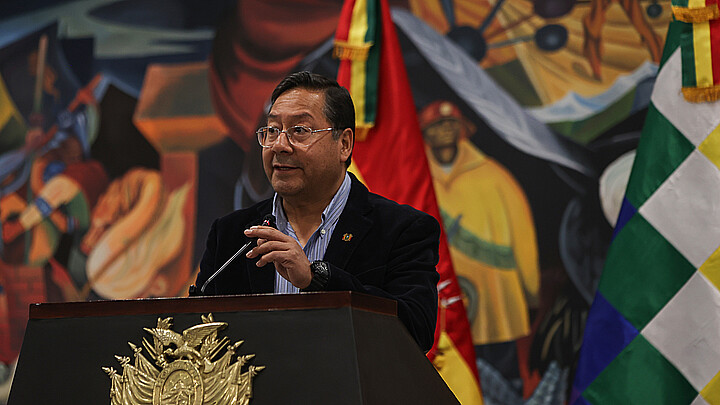Business
Latin America should expect 'bouts of economic turbulence,' IMF warns
“Given the risk that this could coincide with faster Fed tightening, emerging economies should prepare for potential bouts of economic turbulence,” the report warned
January 11, 2022 12:35pm
Updated: January 11, 2022 2:20pm
The International Monetary Fund (IMF) warned on Monday that emerging economies should prepare for “potential bouts of economic turbulence” as the U.S. Federal Reserve prepares to raise interest rates in an attempt to combat inflation.
Citing the disruptions caused by the now surging omicron variant, IMF economists noted that although the global economic recovery from the coronavirus pandemic should continue this year and next, “risks to growth remain elevated by the stubbornly resurgent pandemic.”
Although omicron appears to cause less severe disease and death than previous variants, its spread has continued to spook governments and has led to the reinstitution of mandates and restrictions which have been shown to hamper economic growth.
“Given the risk that this could coincide with faster Fed tightening, emerging economies should prepare for potential bouts of economic turbulence,” the economists said, noting that developing countries are also facing record-level inflation and markedly higher public debt.
The Fed has signaled that it will raise key interest rates sooner and more aggressively than it had previously planned, in order to counter rampant inflation in the U.S. that is hitting U.S. households and consumption.
Last month, members of the Fed’s Federal Open Market Committee (FOMC) reported that their median projection for the fed funds rate would rise from 0.1 percent this year to 0.9 percent in 2022, 1.6 percent in 2023, 2.1 percent in 2024 and 2.5 percent over the “longer run.”
Ultimately, this is concerning for emerging economies with dollar-denominated debt as higher rates mean increased financing costs. Accelerated rate hikes could “rattle financial markets” and “tighten financial conditions globally,” the economists explained.
The IMF’s warning rings especially true in Latin America where inflation has exceeded policy-makers’ targets in all of the region’s major economies.
“Major Wall Street banks are forecasting average cost-of-living increases across Latin America will end the year above 10%, the highest globally, and predict pressure on consumer prices will extend well into 2022,” wrote Maria Eloisa Capurro at Bloomberg.
To make matters worse, Latin American currencies fell last month as the dollar firmed after data showed the U.S. producer price index (PPI) rose to 9.6 percent in November, marking its largest increase since November 2010.
Across the region, central banks responded by raising rates and – in recent months – every major inflation-targeting central bank in Latin America has begun withdrawing monetary stimulus in order to curtail above-target price increases as economies continue to rebound from the throws of the pandemic.
Ultimately, the IMF recommends that emerging-economy nations “tailor their response based on their circumstances and vulnerabilities” but warns that central banks that rely on rate increases in order to fight inflation should engage in “clear and consistent communication of policy plans” in order to “enhance the public’s understanding of the need to pursue price stability.”
When central banks clearly articulate their policy objectives and then take the necessary but well-established steps to achieve those objectives, individuals – and markets – can productively allocate their time and resources.
But to be clear: now, more than ever, it is imperative that central bankers understand the role and limitations of their monetary tools and not give in to experimental, discretionary policies which only bring about uncertainty.
If one remembers the economic and political repercussions suffered after the world's response to the 2008 financial crisis, one might understand why such a route could once again be disastrous.










